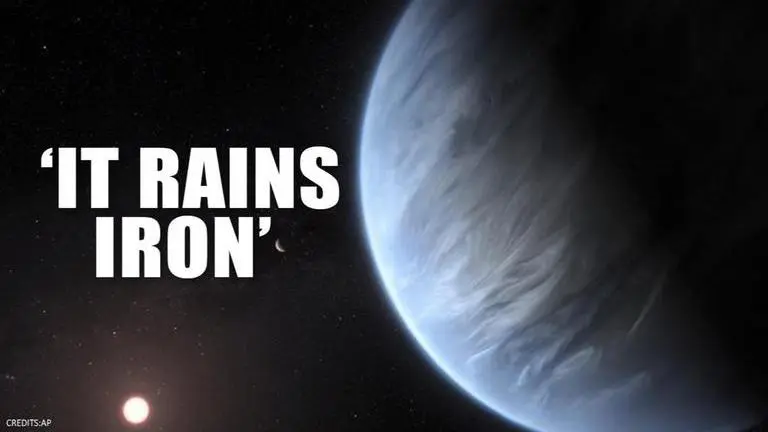Updated 12 March 2020 at 13:02 IST
New planet discovered with temperature exceeding 2,400 Celsius
Scientists have observed a planet where molten iron rains and temperature soars up to 2,000°C. The new exoplanet is called WASP 76b and is 640 light-years away
- Science News
- 2 min read

It may sound like science fiction, but a team of astronomers has observed a distant exoplanet where it probably rains liquid iron. According to findings published in the journal Nature, the planet is known as WASP 76b and is estimated to be located 640-light-years away from Earth. The team of scientists led by professor David Ehrenreich studied the chemistry of the planet using Echelle Spectrograph for Rocky Exoplanets and Stable Spectroscopic Observations (ESPRESSO) at the European Southern Observatory Very Large Telescope (VLT) located on Cerro Paranal, Chile.
Exoplanet where molted iron rains
As per the study, WASP 76b orbits so close to its host star, which is Sun for planet Earth, that daytime temperatures on the exoplanet exceeds 2,400 degrees Celcius, hot enough to vaporise metals. However, the night time temperatures on the exoplanet fall by a whopping 1,000 degrees, allowing the metal to condense and rain out. The study says that the exoplanet is so close to its host star that it takes just 48 hours to complete one revolution, in contrast, the Earth takes 365 days and 5 hours to complete one revolution around the Sun.
Advertisement
Scientists responsible for the find of WASP 76b in their study said, "Ultra-hot giant exoplanets receive thousands of times Earth’s insolation. Their high-temperature atmospheres (greater than 2,000 kelvin) are ideal laboratories for studying extreme planetary climates and chemistry. Daysides are predicted to be cloud-free, dominated by atomic species and substantially hotter than nightsides. Atoms are expected to recombine into molecules over the nightside, resulting in different day-night chemistry. While metallic elements and a large temperature contrast have been observed, no chemical gradient has been measured across the surface of such an exoplanet."
Advertisement
However, this is not the first time when scientists have discovered such an exotic planet. Astronomers discovered a 'blue marble' alien HD 189733 b planet just 63-light-years away from Earth where super-hot glass rain whips sideways through the air at up to 8,70 km/h. As per reports, the temperatures at the HD 189733 b planet soars as high as 930 degrees Celcius during the daytime.
(Representative image)
Published By : Vishal Tiwari
Published On: 12 March 2020 at 13:02 IST
